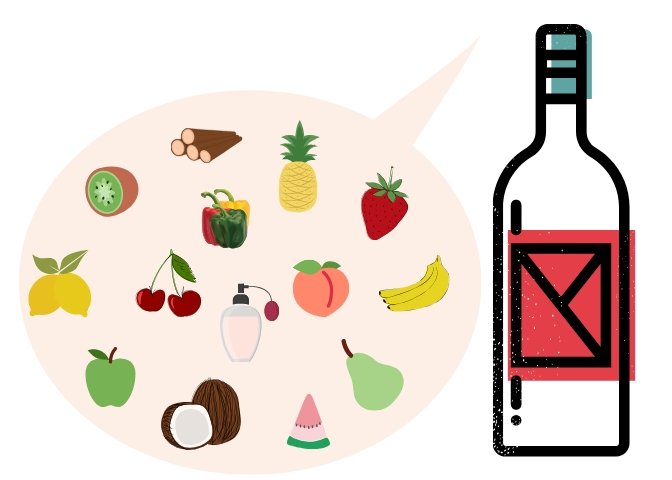A question I'm asked a lot is why wines smell and taste like so many different things and not just grapes. Most wine drinkers notice subtle aromas such as spice, blueberry, tobacco or vanilla. These aromas and tastes are not the result of winemakers secretly blending blueberries into the wine but are created from the process of winemaking.
Let's start by looking at the vocabulary used to describe these terms and then the scientific reasoning.
The vocabulary can sometimes be baffling to many people when they start exploring wines by tasting notes. We have all read confusing descriptors like "the wine was brisk, subtle and showered the glass with aromas of barnyard, hay and chocolate."
I like to explain to tasters to think of it this way, what does the aroma remind you of when you smell the wine? When I smell many gewurztraminers, it reminds me of a rose perfume my grandmother would wear. You may smell something different, but equally floral in gewurztraminer. These descriptors are sometimes specific to the taster and are often references to what psychologists call smell memories — a scent's ability to evoke specific memories.
The scientific aspect is generally much easier to understand. The science of wine aroma and flavors involves both the grapes and the fermentation process. Each grape variety has a very unique physiological makeup with aromatic compounds varying with how the grapes were grown (both viticulture and climate.) The aromas and taste are then amplified or modified during fermentation. Hundreds of aromatic compounds known as "esters" are released during fermentation. Some of these esters contain the same molecules found in familiar aromas and taste in roses, honey, vanilla, cherries, etc. Esters are responsible for the different aromas we experience everyday from pineapples (Ethyl Butanoate) to the smell of a Christmas tree (Bornyl Acetate).
Most esters in wine impart a "fruity" smell. Each grape variety is unique. In younger wines there are primary aromas. In red wines those can be red berries, cherry, blackberries and blueberries, and for white wines they can be apples, pineapples, citrus and other tropical fruits. As wines age another tier of aromas develop known as "secondary" and "tertiary" and can be tobacco, smoke, truffle and earth. These are the sought-after aromas usually only found in high-end wines intended to age.
It takes a lot of practice to decipher the many layers of aromas and taste a complex wine will impart. The good news is you can find the Wine Aroma wheel easily on the Internet, giving you a sort of "cheat sheet" for guiding your smell and taste. But remember, practice makes perfect and just simply writing down the aromas and taste in your next glass of wine will put you on your way to being an expert taster.
To get you started, here's some homework.
Sauvignon Blanc (citrus fruits, green apples, bell pepper, grass)
2017 Monkey Bay Sauvignon Blanc, New Zealand (about $13 retail)
Merlot (plum, strawberry, blackberry, oak)
2017 Charles Smith Velvet Devil Merlot, California (about $14 retail)
Lorri Hambuchen is a member of London's Institute of Wines and Spirits. Contact her at the Arkansas Democrat-Gazette, P.O. Box 2221, Little Rock, Ark. 72203, or email:
uncorked@thewinecenter.com
Food on 02/27/2019
